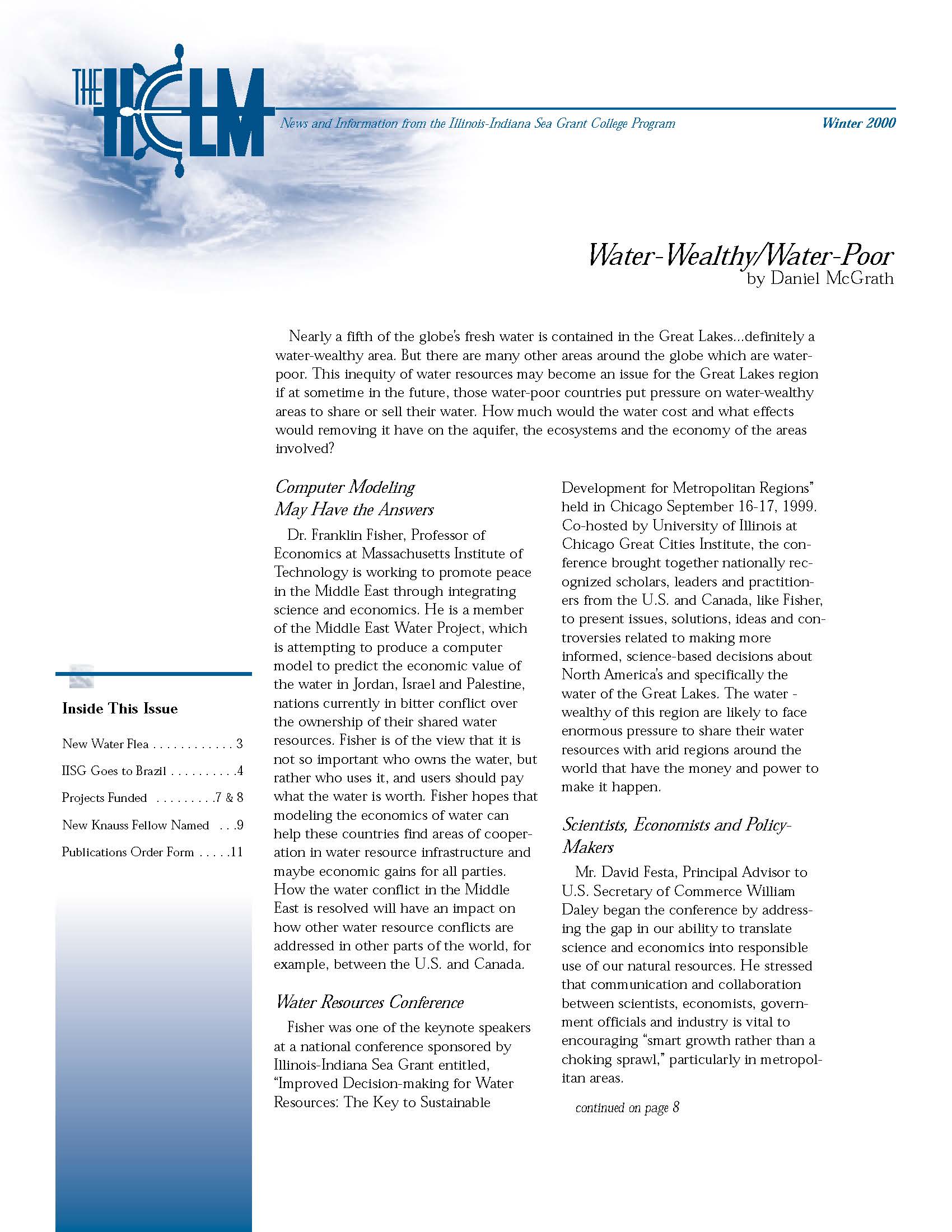
File Size: 592.68 KB
Feature Headlines
- Water-Wealthy/Water Poor
- Charlebois Indentifies New Invader
- IISG Goes to Brazil: An Interview with LaDon Swann
- NiSource and IISG Team Up to Fund Environmental Projects
- The Forecast for E. coli is….

Feature Headlines
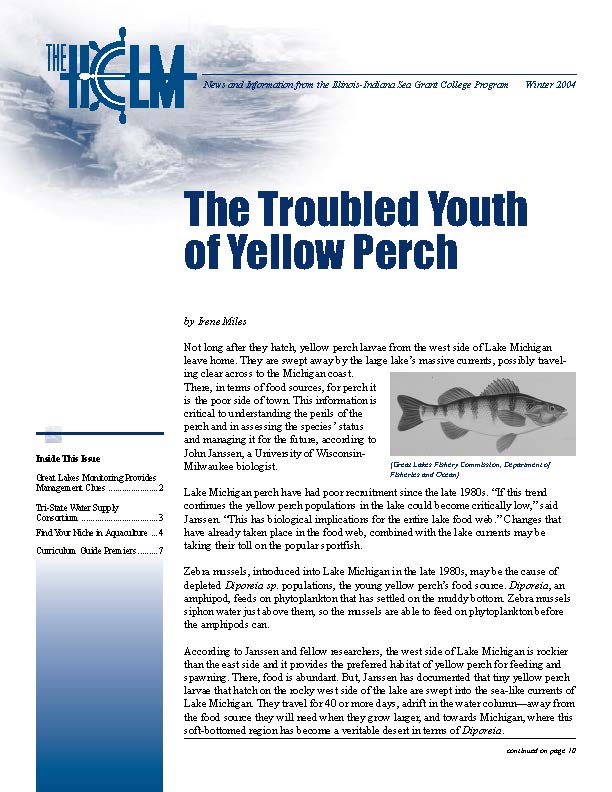
Feature Headlines

Feature Headlines
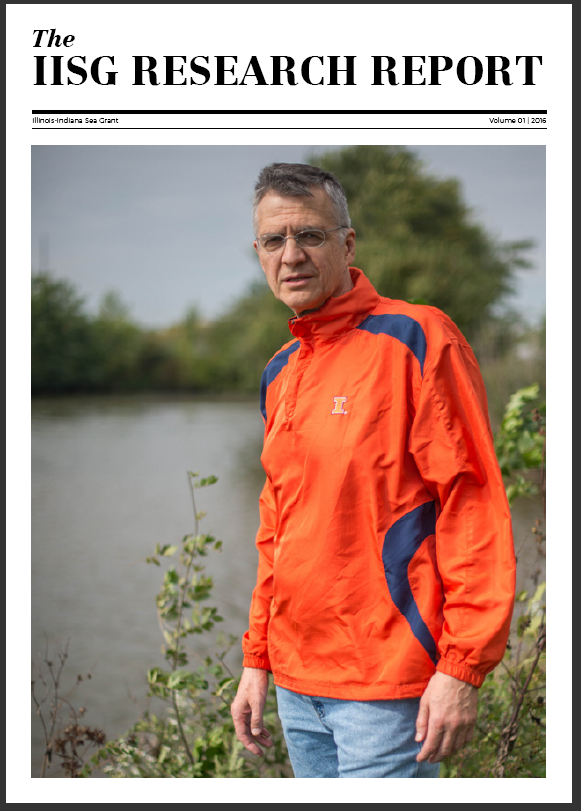
Overview of funded research in Illinois-Indiana Sea Grant in 2016
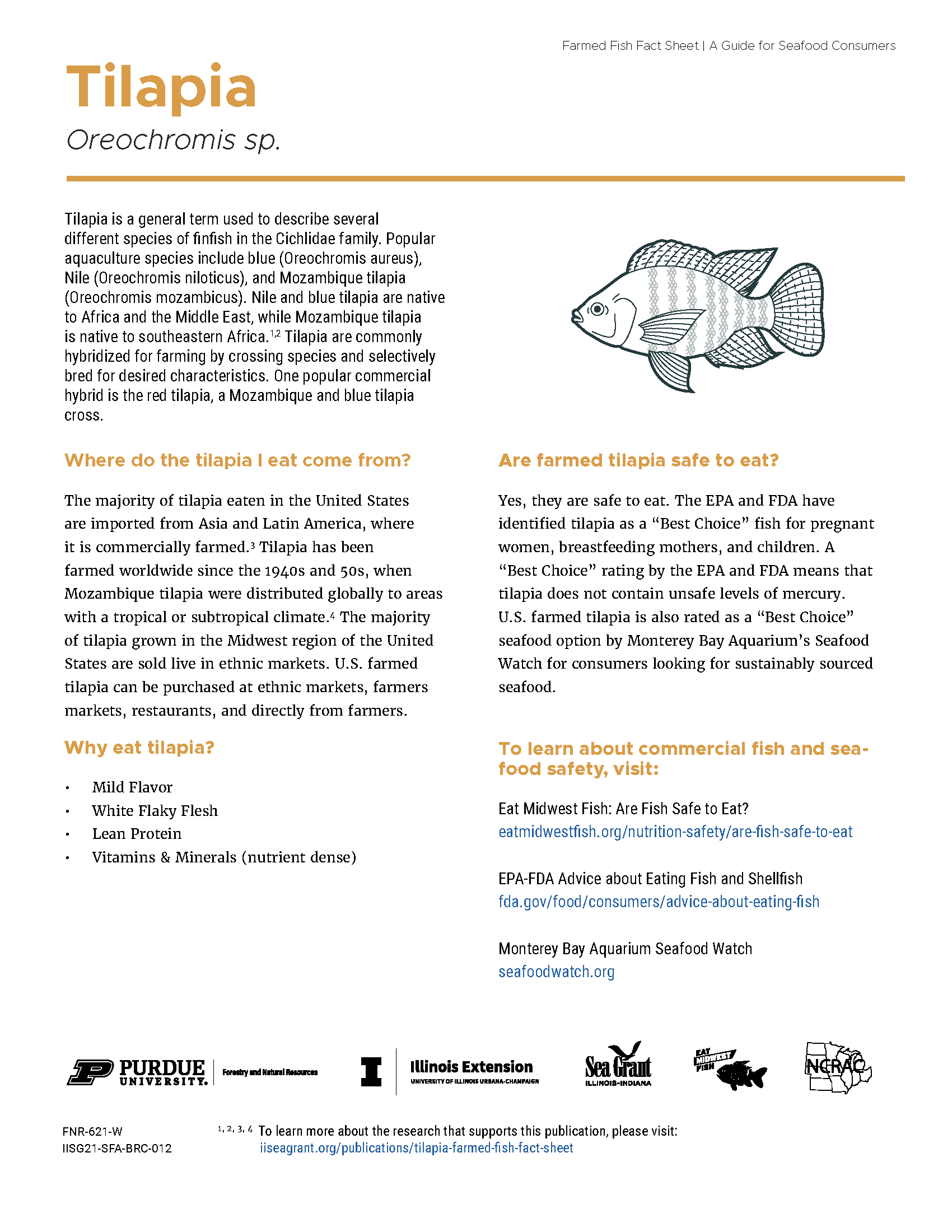
This is the third in a series of consumer guides that describe fish and shellfish farmed in the Midwest region of the United States. The fact sheet also includes culinary characteristics, cooking tips and a recipe for Sautéed Tilapia.
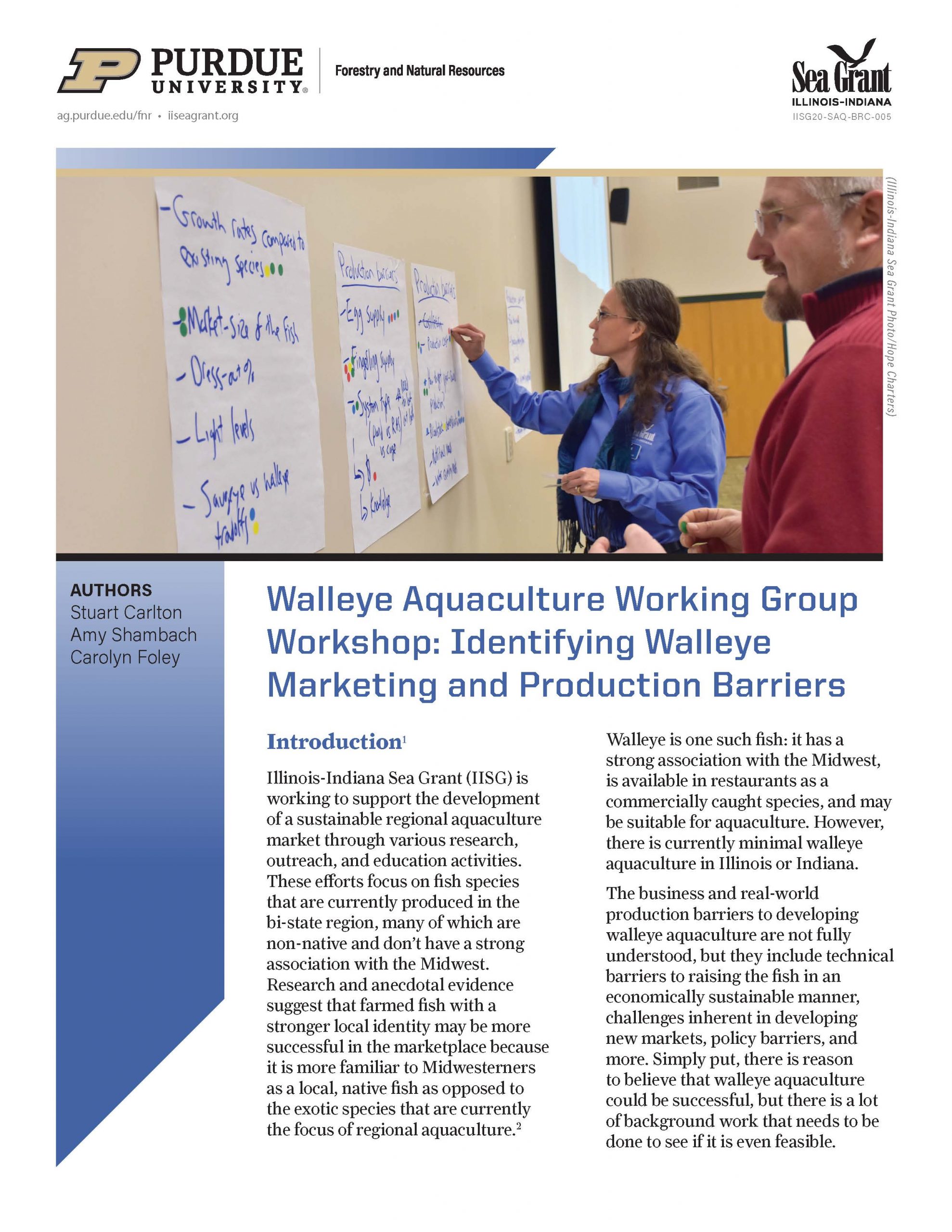
A summary of marketing and production barriers to walleye aquaculture production in Illinois and Indiana as determined during the first Walleye Aquaculture Working Group workshop.
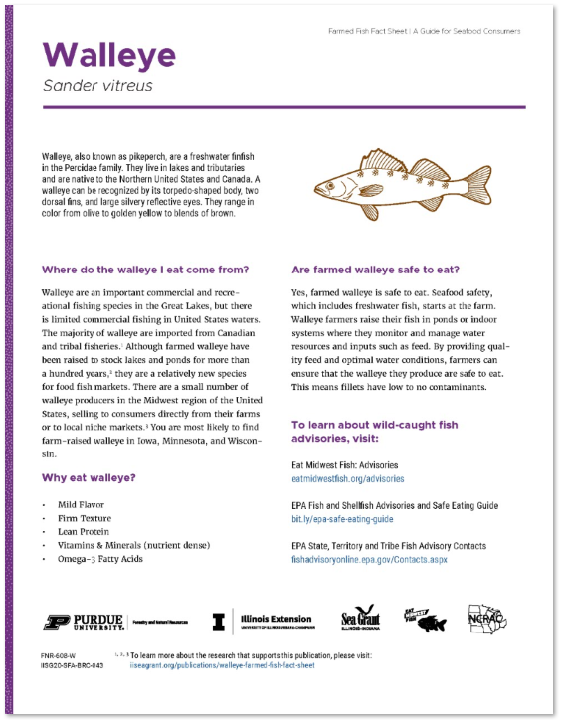
This fact sheet is a consumer guide to farmed walleye. The publication describes walleye, walleye farming, product safety, and culinary characteristics of walleye in addition to cooking tips and a recipe.
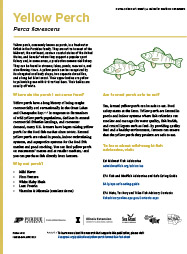
This is the second in a series of fact sheets that describe fish and shellfish produced in the Midwest region of the United States. (See FNR-608-W, Walleye Farmed Fish Fact Sheet.) Yellow perch have been popular among anglers for many years, and since 2002, responding to greater demand, U.S. farmers are raising perch in ponds, aquaponic systems, etc. The fact sheet also includes culinary characteristics, cooking tips and a recipe for Baked Parmesan Perch.